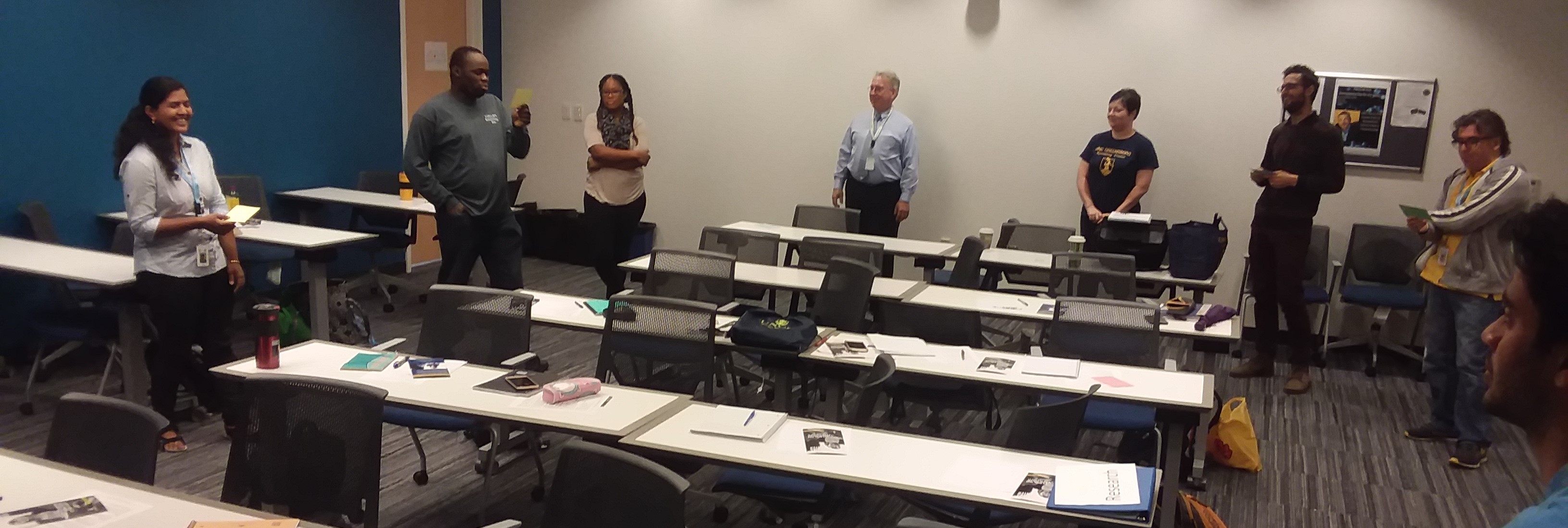Initial Access to Nanoscience Students
Hours
| Fall & Spring Semester Semester | |
| Monday-Thursday: | 10am-7pm |
| Friday: | 9-12noon |
| Saturday: | closed |
| Sunday: | 4pm-8pm |
Initial Access to Nanoscience Students

Cuny developed this program with the participant goals of understanding that speech-making is a process, engaging in a positive interactive introduction to the speaking center, and engaging in a creative improvisational activity which provided opportunities to be vulnerable and connect. Jenny Southard, the center’s coordinator joined Cuny as a facilitator. They started the session by sharing their own “becoming a speaking center professional” stories as an introduction to themselves and the center. Each took the time to provide a short narrative about how it is that they came to be speaking center professionals. These were very brief narratives which provided a road map to where they are professionally. Next Southard led the group through the speechmaking process activity. To prepare for this activity we started with five sentences, each one representing one of Aristotle’s Canons. Individual words from each sentence were printed, in large font, on a single sheet of paper, then laminated. Supplies needed were simple, laminated sheets, masking tape, and five copies of the five-full sentences. When it is time to facilitate, five leaders from the participants were identified while multiple laminated pages were distributed to the non-leaders. Leaders were each assigned one of the sentences then instructed to find the words they needed to put their sentence on the wall (with masking tape). The rules were, leaders cannot speak the word they are looking for and they needed to find the words in the order typed in each sentence. What follows, while loud and chaotic, always puts smiles on the faces of the participants. Next the facilitators asked everyone to literally take a step back and read all of the sentences in preparation for putting them in a speech-making process order. It is important to close this activity with a quick discussion that points the participants to the fact that these are not steps per se, any part of the process is likely to be revisited throughout one’s speech making process.
Next Cuny instructed the student participants to write a short version of their own “becoming a scientist” story pointing to the stories she and Southard had previously shared as models. After, students were paired up and instructed to share their writing with one neighbor. Southard participated because there was an odd number of students. Herr invited Cuny to be his partner and they also participated. Cuny and Southard shared their communication studies teaching stories as they are not scientists and previously shared their speaking center stories in the room. After sharing, each picked one interesting sentence from their partner’s story and transferred the sentence, as written, on a single index card. Cuny collected index cards and redistributed them. Students, standing in one large circle shared a bigger, less fluid story as they took turns reading the card they were given. We were able to meet all of our goals because the students were willing participants. Without their willingness, we could not have succeeded.
This is part of The University Speaking Center at UNC Greensboro’s archival account of communicating science pedagogy developed and/or facilitated by Kim Cuny, Erin Harrison, Taylor, Williams, Jenny Southard, and Miranda Tonkins. Most of these interventions were funded by a UNC Greensboro INNOVATE grant.





